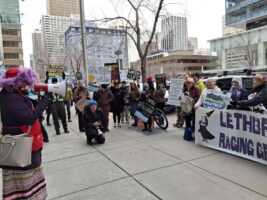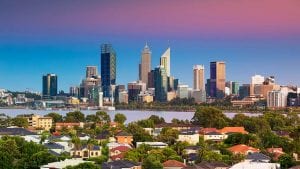
Several Prime Ministers and two Queensland Premiers ago, the Kogan Creek Solar Boost project commenced near Chinchilla in Queensland. This was to be a 200,000m2 array of Linear Fresnel concentrators providing extra steam to the Kogan Creek coal-fired power station and so generating an extra 44MW of solar electricity from the turbines.
In doing so it would become Australia’s first utility scale Concentrating Solar Power Plant, only the third utility scale Linear Fresnel system globally and the biggest ever solar boost configuration. The project received a major grant commitment from the Federal government that was subsequently administered by ARENA.
However, the project has been stalled for some time and a fortnight ago, CS Energy, the state owned power station and project owners, announced they would not be finishing the project.
So what went wrong?
The fundamental problem with the Kogan Creek Solar Boost project is that the technology proponent and EPC contractor (the large French state owned energy corporation AREVA), did not see it through. AREVA announced a withdrawal from their solar business overall that coincided with a half completed project at Kogan Creek and has ultimately lead to the present situation.
There is nothing wrong with the technical fundamentals of the Linear Fresnel Reflector (LFR) technology. Sure, there will be technical problems to solve with such early stage projects and often they go over initial time and budget estimates. That is the nature of bringing a new technology to market.
It is important not to jump to the conclusion that a technology or class of technology lacks potential because particular businesses or projects have run into difficulties. We should not throw solar babies out with the bath water.
The clean energy sector is experiencing amazing levels of growth globally, but the commercial world is ruthless and there are failed companies and ventures to be seen in every technology direction. A classic example is Suntech, a world leading PV panel manufacturer in China, suffering a financial collapse few outside the company predicted. One would hardly take that as evidence that flat plate silicon PV is not a successful technology.
I do not pretend to know the details of AREVA’s business operation, however, like many traditional energy companies in Western Europe they have been facing tough times. Their core business is nuclear power systems and they clearly reached a view that they could not see the new initiative of a solar division through to maturity in the circumstances they were in.
It is a sad irony that an excellent example of Australian solar innovation is now suffering a major setback in its development because of the difficult circumstances faced by a large western European state owned corporation whose core business is nuclear power.
It is worth re-capping that the technology in question was initiated by David Mills (ex Uni of Sydney) and Graham Morrision (ex UNSW). Together with business partners, they began with an Australian start-up company, moved to the US and became Ausra and attracted investment from Silicon Valley that allowed a major successful pilot scale system to be built there. This lead to the subsequent purchase of Ausra by AREVA and the creation of AREVA Solar, with Mills and Morrison retiring from the business.
I have some sympathy for CS Energy. Whilst it would have been excellent for the CSP industry if CS Energy themselves could have filled the gap left by AREVA, it is unrealistic to expect a naturally technically risk averse manager of generating assets to simply step in and take over the testing and debugging of a new solar technology. Through this project, CS Energy have also had to deal with the shifting goal posts of two changes of State Government and a decline in electricity demand in the NEM.
The solar boost configuration, whereby a solar thermal array adds extra heat to an existing fossil fuelled power plant still offers opportunities for Australia. However we cannot expect much enthusiasm from the owners of coal fired generating assets when we have a widely acknowledged surplus of generating capacity on the market and no current price mechanism on GHG emissions. If these issues can be resolved in the term of the next Federal Government the appetite for solar boost projects could change rapidly.
The Kogan Creek Solar Boost system has progressed a long way. Before leaving the project, AREVA successfully fabricated all the components for the very large solar array and these are of good quality. Ironically, the balance of the mirror modules that were held in storage for AREVA in Dalby are still now being delivered to the Kogan Creek power station site. Without underestimating the challenges, this is a project valued at around $100m that is about half finished and simply needs assembly and commissioning to become Australia’s first utility scale CSP plant.
Comments have been made that the technology as implemented at Kogan Creek is now outdated. Whilst it is the case that AREVA developed another evolution of the LFR collectors that they used for a system in India, the fundamental design and principles are the same, they have simply increased the size and found some manufacturing efficiencies.
The array components as constructed are still at the forefront of LFR technology. Completing the Kogan Creek system and running it for an expected 20 odd year life would provide very relevant and valuable lessons on operational issues. O&M practices, component lifetimes and design improvements that would be of benefit to any subsequent commercial efforts with LFR systems.
All this needs consideration in the context of the CSP industry globally and the role of CSP in a wider solar or indeed renewable industry context. CSP continues to grow strongly despite the various hiccups of particular business players. Significant attention is now rightly focussed on tower / heliostat based systems with integrated molten salt thermal energy storage. It is clearly recognised that CSP’s biggest competitive advantage is very cost-effective energy storage.
Linear Fresnel proponents always argued that they could build collectors the cheapest. As it transpires the two biggest efforts to date with LFR have pursued direct steam production as a path to lowest cost. In retrospect this has meant that they do not have a thermal storage solution perfected.
However direct heating of molten salt in a 1MW pilot LFR system has been successfully demonstrated in Spain. Bringing such a configuration to market could well put LFR back in the CSP race. It is also worth noting that the LFR array at Kogan Creek producing steam directly is a configuration that could be ideal for bringing process heat to industry, an area of interest recently adopted as a priority by ARENA.
There is still a chance to turn this situation back into a success. I understand that CS Energy are open to offers by other groups to make use of the site and the array components. It is to be hoped that a suitably qualified group could consider that opportunity and put together a plan to secure energy offtake agreements, raise the remaining investment and complete the project.
It is also to be hoped that the Queensland Government would play a constructive role in turning around a project that got into difficulties under the watch of its predecessors.
It is hard to imagine the alternative, that a government that is embarked on a plan for 50% renewable energy by 2030 for the sunshine state, would like to see the scrap metal merchants sent in to crush a globally significant $50m solar asset.
Keith Lovegrove is Head of Solar Thermal, IT Power Group








